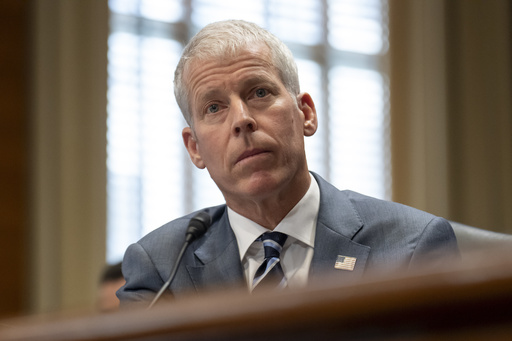CHEYENNE, Wyo. — In a groundbreaking development, the proposed Brook Mine in Wyoming aims to become the first new coal mine in the state in decades, accompanied by an ambitious plan to extract rare earth elements from coal—a venture that might cost up to half a billion dollars. These elements are indispensable in numerous tech products and military applications.
Energy Secretary Chris Wright, alongside Wyoming Governor Mark Gordon and the state’s congressional representatives, participated in a ribbon-cutting event for Ramaco Resources, Inc.’s initiative at a location near Ranchester, northeastern Wyoming. Wright emphasized the national implications of this project, stating, “Not only do we get coal here, but we’ll also obtain rare earth elements, reducing our reliance on China.”
Wright’s support highlights a broader push within the current U.S. administration to bolster fossil fuel industries and mining while moving away from previous energy policies focused on renewables.
Recent actions by administration officials include advancing the sale of federal coal leases in key areas of northeastern Wyoming and southeastern Montana, as well as proposing new coal exploration projects. Legislative changes now lower royalty payments for mining companies on public lands and open up more areas for potential mining.
Parallel to these efforts, Utah local officials are advocating for federal support to develop a railway connection to stimulate oil drilling, pushing for a multimillion-dollar bond to construct this infrastructural spur that will enhance oil export capabilities from the Uinta Basin.
On Friday, attention was also directed towards rare earth elements, a group of 17 metals with unique and valuable properties used in technologies such as electric car batteries, wind turbines, and various military devices. Although the U.S. has a rare earth mine operating at Mountain Pass, California, a significant portion of the supply currently comes from China, the global leader in these materials.
The scattered nature of rare earths makes them challenging to collect in large quantities. Fears about consistent access have prompted efforts to boost domestic production, reducing dependency on foreign sources.
Ramaco’s CEO Randall Atkins announced plans to mine these elements in Wyoming, process them locally, and sell to U.S. customers, including the government. The involvement of figures such as former U.S. Senator Joe Manchin, now on Ramaco’s board, underscores the project’s political significance.
Although the Brook Mine is relatively minor, its potential opening represents a positive outlook for Wyoming’s coal industry, which has seen a decline coinciding with energy market shifts.
“Wyoming is adapting to meet growing energy needs both domestically and globally, acknowledging that Wyoming coal is crucial to a balanced energy strategy,” noted Governor Gordon after the mine’s opening ceremony.
This mine has been over a decade in the making, with delays partly due to environmental concerns about groundwater resources. Initially intended to serve as a provider of traditional coal, the project has evolved to incorporate new technology-driven goals. Ramaco, which already operates other mining operations, has secured several Department of Energy grants to explore innovative uses for coal, such as producing carbon-based materials like carbon fiber. Most recently, the company received additional funding from Wyoming to establish a processing plant specifically for rare earth and other critical minerals.
A recent analysis estimates that the full development of the mine and processing facilities could require an investment of $533 million, with the potential for profitability within five years, anchored in anticipated demand for these rare earth elements. Furthermore, processed coal could be sold as a traditional energy source.
Studies by national laboratories have determined that the coal from Brook Mine contains valuable amounts of several rare earth elements and critical minerals—essential for a wide array of high-tech and strategic applications. Meanwhile, the revelation of potential uses in wind turbines, automotive batteries, and military technology emphasizes their importance.


